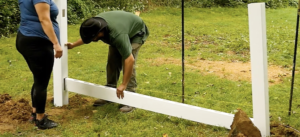You need to visit an eye care professional for a regular eye exam. These visits help catch diseases and other medical conditions early on.
Eye health professionals include optometrists, ophthalmologists, and opticians. Those who want to be ophthalmologists must attend medical school and a residency program. Ross University School of Medicine has a strong record of placing students in ophthalmology residencies. Contact My Eye Doctor Towson now!

Eye exams are the key to detecting vision problems, such as cataracts and retinal detachments, and health issues like diabetes, high blood pressure, and brain tumors. They also help your doctor determine the correct prescription for your glasses and contact lenses.
To begin your eye exam, your doctor will ask questions about any symptoms or changes in your vision and examine the shape and condition of your cornea, iris, and lens. Your eyes will be examined in the front and back to check for abnormalities like glaucoma. In addition, your doctor will assess how your eyes move together and individually to identify problems like strabismus (crossed eyes) and amblyopia (lazy eye).
The next step of your eye exam is visual acuity testing. This is typically performed using Snellen charts with letters at varying sizes and distances to determine how clearly you see. Your eye care provider will also perform a refraction assessment to measure nearsightedness, farsightedness and astigmatism. To do this, your doctor will position a phoropter instrument with different lenses in front of your face and will ask you when the letters become clearer. This process is repeated with several different combinations of lenses until the prescription that best corrects your visual acuity is determined.
A cover test is another important part of an eye exam that allows your doctor to evaluate your depth perception, ocular motility and binocular vision. During this test, your doctor will have you alternately cover one of your eyes while looking at a particular object or chart. Then, they will observe how much your other eye moves to compensate for the lost focusing power. This can identify a variety of conditions, including strabismus, amblyopia and depth perception issues.
Lastly, your eye doctor may perform an eye pressure evaluation to detect the presence of glaucoma. During this test, your doctor will use anesthetic drops to numb the surface of your eye before puffing air into your pupil. This is one of the most uncomfortable tests during an eye exam, but it is important to your overall eye health and can help prevent glaucoma in some cases.
Contact Lenses
Contact lenses are thin discs of plastic or glass that sit directly on your eye to correct your vision. They’re most commonly worn by people with nearsightedness, farsightedness, or astigmatism. The lens is designed to bend light rays in the eye, directing them toward your retina where they focus to create an image of objects that are closer than they actually are. This allows you to see clearer than if the eye was naturally without correction.
Your doctor will recommend a type of contact lens for you based on the results of your exam. They’ll also advise you on proper care for your contacts. Ideally, you should clean your lenses daily. You should also keep multipurpose contact solution and a storage case with you at all times. When handling your contact lenses, be very gentle. They’re medical devices and delicate, and they can rip or tear if handled roughly.
Whether you wear soft or hard contact lenses, it’s important to remove and disinfect them each night before sleep. This reduces the risk of acanthamoeba infection, which can cause eye disease and even loss of sight. Your doctor may also give you eye drops to soothe and protect your eyes while you’re wearing contact lenses.
Some types of contact lenses are disposable, discarded after one day of use. Other soft lenses, and some rigid gas permeable (RGP) lenses are intended to be worn for a full day and then removed before sleeping, or what’s called “extended wear” (EW). Newer materials for EW and CW lenses allow 5-6 times more oxygen through the lens than conventional soft lenses.
If you wear a pair of disposable lenses, it’s a good idea to have a backup pair available in case your first pair gets lost or damaged. You should always carry your contact solution and storage case with you, so you’re ready to replace a lost or damaged lens immediately. Your doctor will tell you if your contact lens needs to be replaced or not, and how often you should change it out.
Eyeglasses
A pair of glasses isn’t just a fashion statement—it’s a necessity for people who have trouble seeing. If you need eyeglasses, there are more options than ever for frames, lenses and coatings that can make them more comfortable, durable and functional. Your optometrist can help you find the right glasses for your needs and lifestyle.
Most eyeglasses are made from a combination of two key parts: the lenses and the frames. Lenses are clear pieces of glass or plastic that are customized with your prescription to help you see better. They’re shaped and sized to correct your particular vision issues, such as nearsightedness, farsightedness or astigmatism. The rims of the frame, which are the small parts that sit around your ears and nose, help keep the lenses in place. They’re also designed to complement your face and personality.
There are several different types of lenses to choose from, including single-vision and multifocal lenses. Bifocal lenses are split into two sections, with the upper portion of the lens correcting distance vision and the lower portion for near vision. Trifocal lenses have three areas, with the top area correcting distance vision, the bottom area for near vision and the middle area for intermediate vision.
The underlying technology of a corrective lens is actually quite simple. The lens is a prism, with one end thicker than the other. When it’s placed in front of the eye, the lens adjusts the focusing point of incoming light to line up with your retina for clear vision.
When choosing a pair of glasses, don’t be afraid to spend a little more for quality frames and lenses. If you have vision insurance, it will likely cover most of the cost of your eyeglasses. And if you do have to pay out-of-pocket, the average one-time cost for an eye exam, lenses and frames is $398.
Achieving good vision with eyeglasses is easy once you know how to choose the right ones for your specific needs. Take the time to select frames that are comfortable and fit well. Then, make sure to clean them regularly with water and a non-lint cloth, and don’t forget to schedule your annual eye exam.
Glaucoma Treatment
The eye is filled with fluids that provide nutrients and do many other important jobs. When the pressure in these fluids rises, it can cause damage to the optic nerve. Your eye doctor can use tests to determine if you have glaucoma, and he or she will recommend treatment options based on the type and severity of your condition.
Most types of glaucoma are caused by problems with the way the eye creates or drains fluid. When the drainage canals are open and working properly, intraocular pressure (IOP) is usually low. But if the canals are blocked or have other problems, pressure may build up. If left untreated, glaucoma can lead to blindness.
Medications are the first line of treatment for most glaucoma patients. They can help lower eye pressure by making the eye less likely to produce fluid or by helping existing fluid drain better. Some medications also treat the underlying problem that causes glaucoma.
Surgery can also help with certain types of glaucoma. Acute angle-closure glaucoma is an emergency, and you should get treatment right away. This form of the disease can cause permanent vision loss within days unless you receive treatment. Treatment for this form of the disease is aimed at opening the eye’s drainage canals as quickly as possible.
Other surgeries include trabeculectomy, which creates a new opening for fluid to leave the eye and reduces pressure. Another option is a drainage implant, which sends aqueous fluid to a reservoir (called a bleb) beneath the conjunctiva. The bleb is covered by the sclera and the conjunctiva, so it’s not visible. The bleb then is absorbed into the blood vessels around the eye, which lowers eye pressure.
A newer set of treatments is called microinvasive glaucoma surgery (MIGS). In these procedures, your doctor uses microscopic instruments to make small openings and devices that you can’t see. This type of surgery is typically faster and safer than traditional surgeries. It can even be done at the same time as cataract surgery. Examples of MIGS are trabectome, iStent and transscleral cyclophotocoagulation (CPC). Cyclophotocoagulation is a procedure that freezes parts of the middle layer of your eye to slow fluid production.








